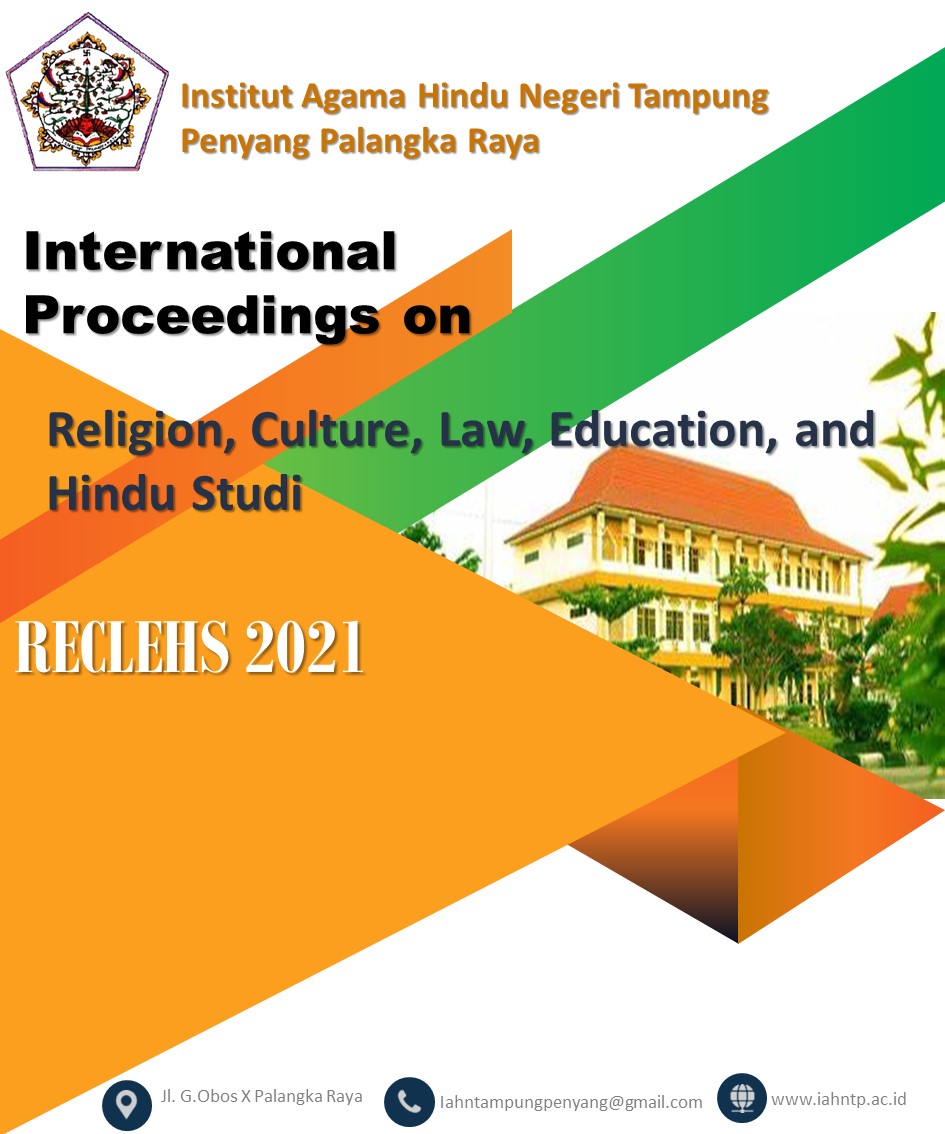The theory of Liberation from Brahmokta Vidisastra
DOI:
https://doi.org/10.33363/internasional-seminar.v0i1.201Keywords:
Brahmokta, Widhisastra, LiberationAbstract
Dasaksara as it is widely known in Balinese Hindu society, is composed of a series of Panca Brahma (Sa, Ba, Ta, A, I) and Pancaksara (Na, Ma, Si, Wa, Ya) scripts. The ten holy scripts were first found in the book of Saiwa Religion in India where His "descendant" had time to go to Bali through the spread of Hinduism to the archipelago in the past. Careful excavation of the religious books of the Shiva Darsana group such as Pasupata, Saiwa Siddhanta, Vira Saiwa, Nandikeswara Saivism.
The concept of rwa bhineda which is an inversely proportional concept of Liberatioan or its opposite which has the same goal to achieve balance. In this concept of divinity, there is also the embodiment of Lord Shiva, which is the teaching of these gods, which is a symbol of the attainment of Liberatioan.
It is necessary to know the structure of the organs in the human body to know the path of the atman to heaven and hell in the human organs. Starting from the name of the structure of the organs in the human body, the work system and metabolism of the body as the place where the atman resides and the atman comes out in the process of release. Knowledge of the structure of the body and work systems is used to help focus the mind as it is very important in the attainment of detachment The combination of the atman with the body causes humans to live which is also called Jiwaraga. Man's freedom from the world is one with God that achieves liberation in the text of the Tutur Brahmokta Widhisastra the highest freedom, which is to focus the mind on achieving spiritual freedom towards God, avoiding reincarnation
Downloads
Published
Issue
Section
License
Copyright (c) 2021 International Seminar Proceeding

This work is licensed under a Creative Commons Attribution-NonCommercial-ShareAlike 4.0 International License.



